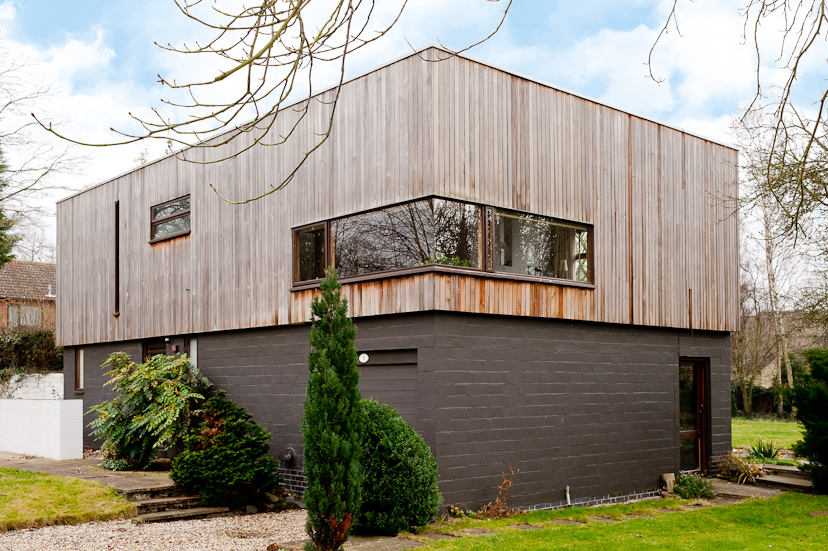
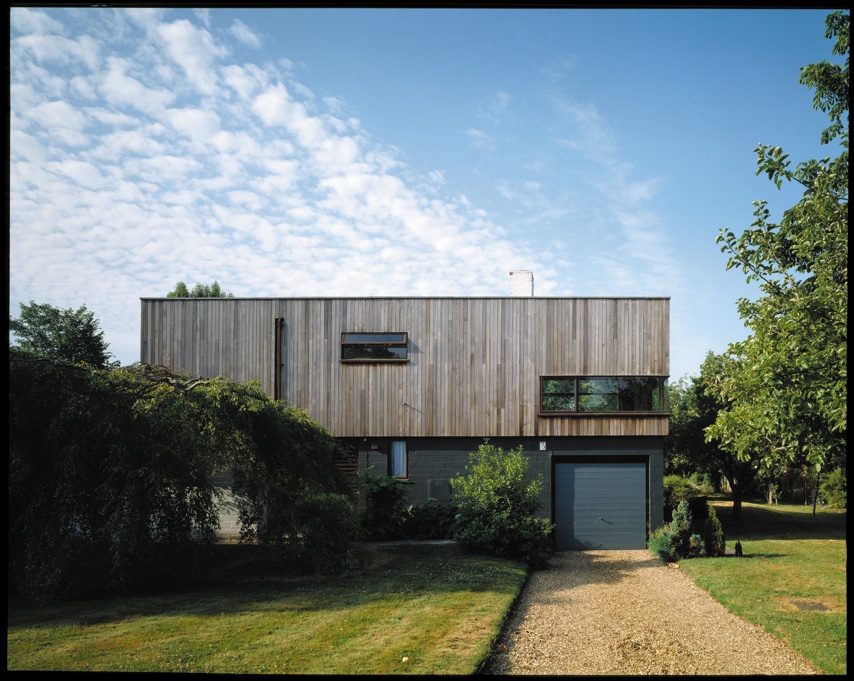
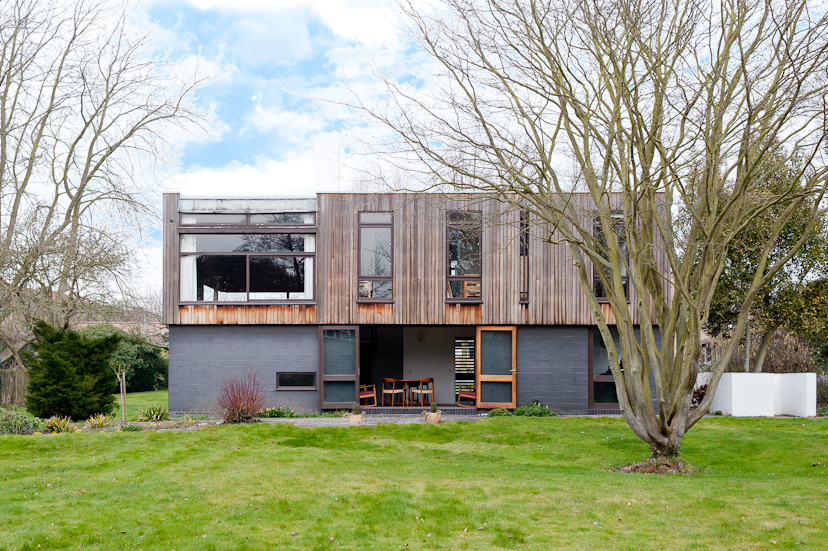
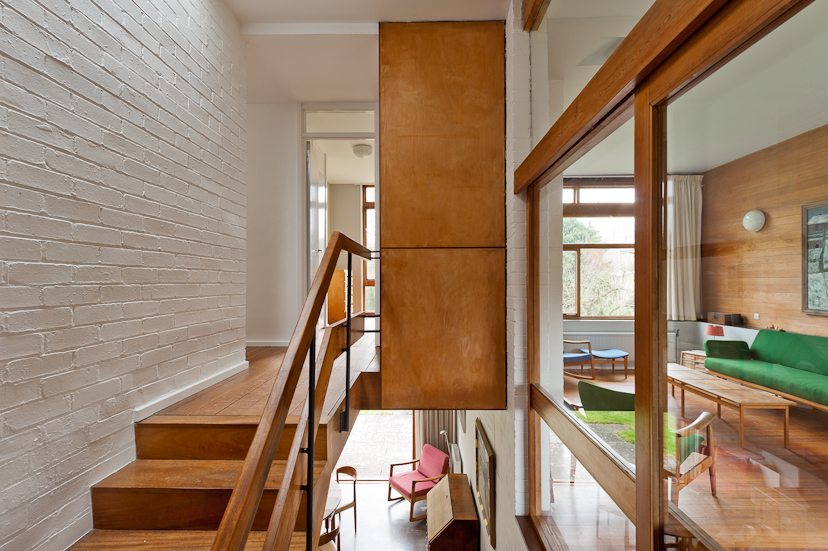
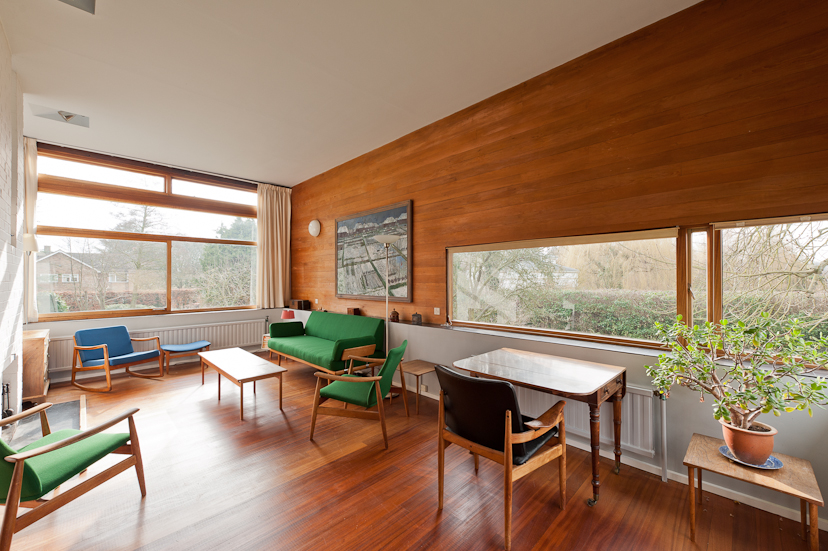
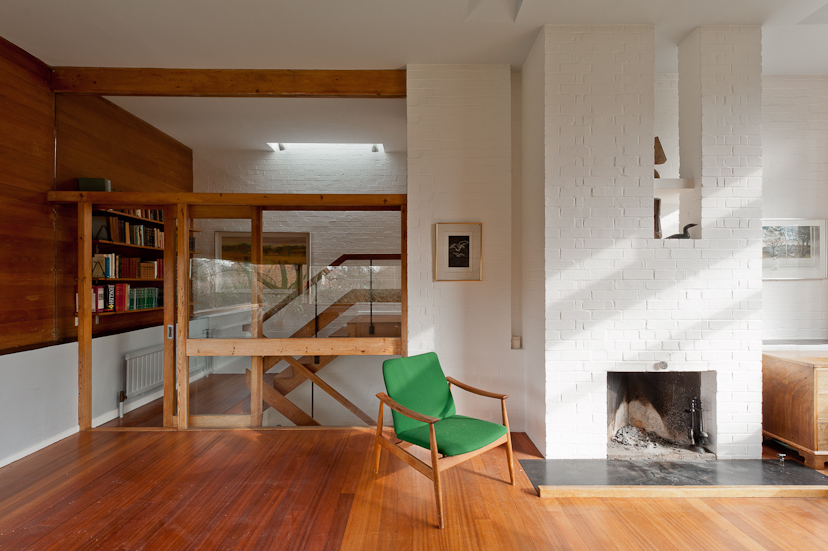
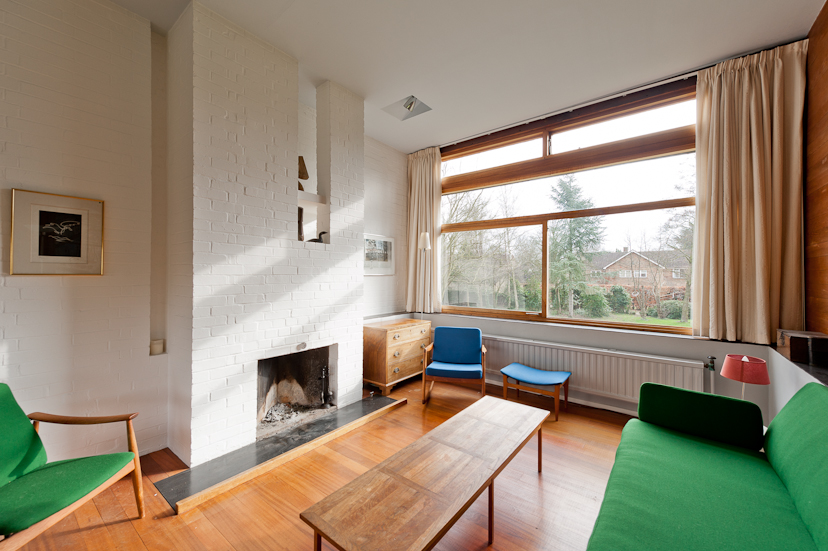
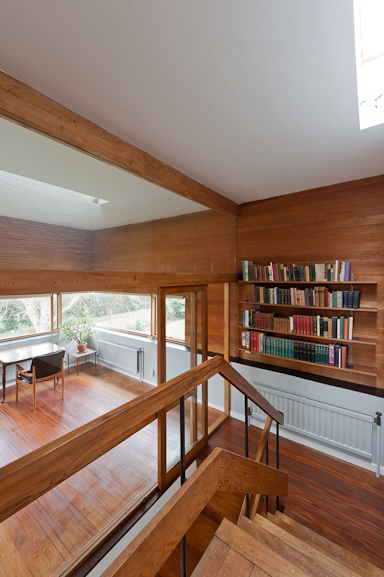
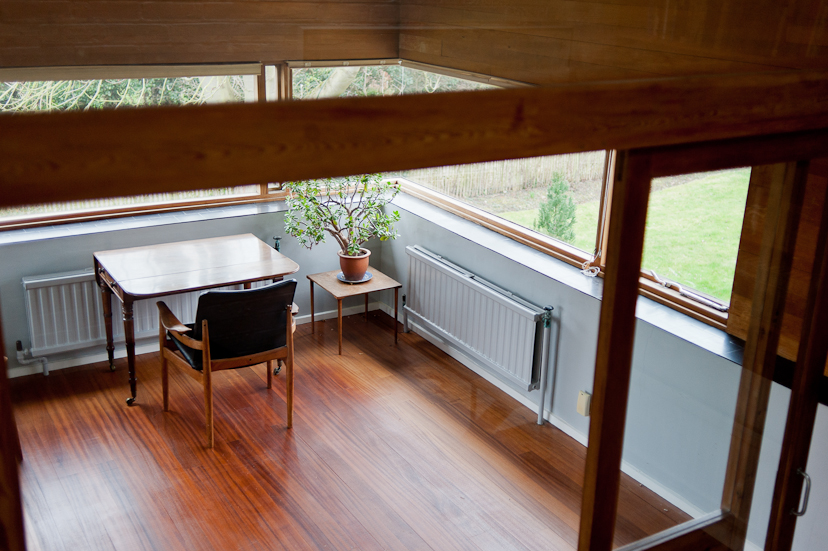
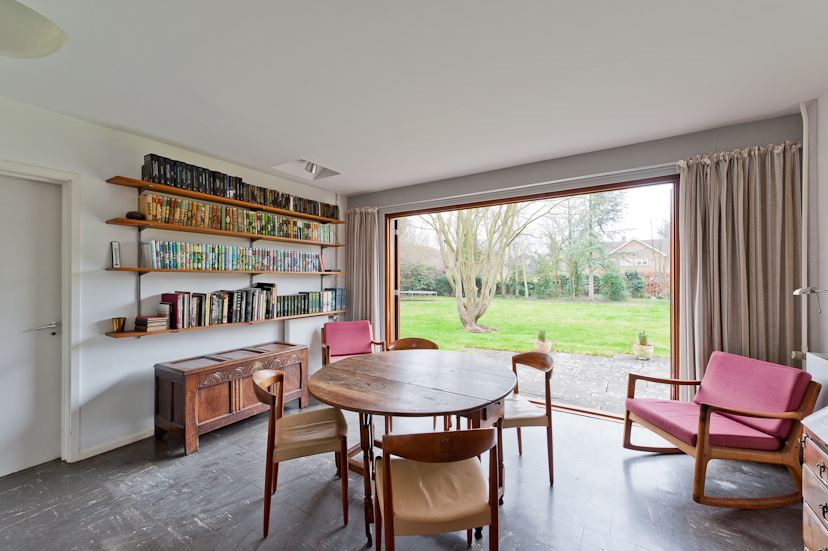
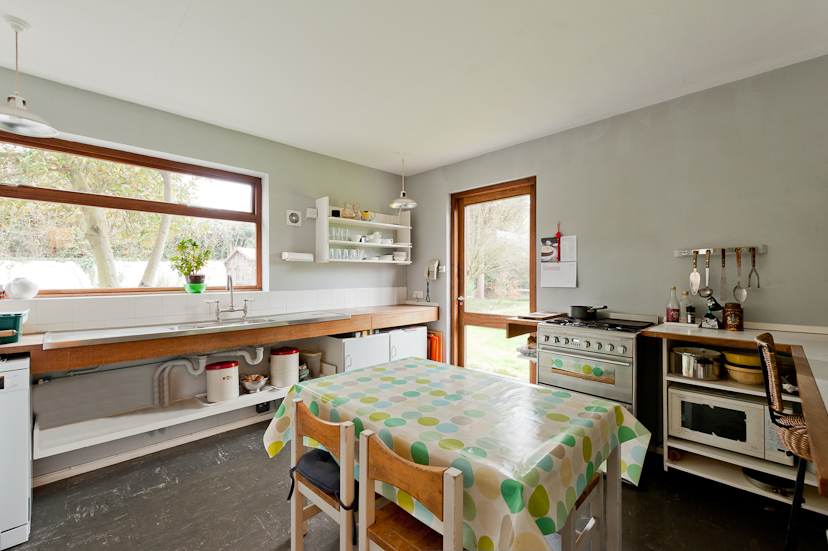
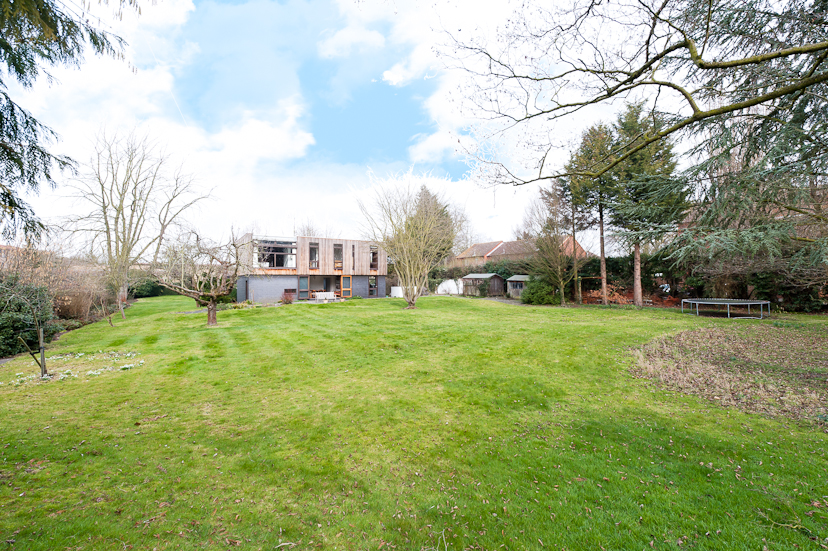

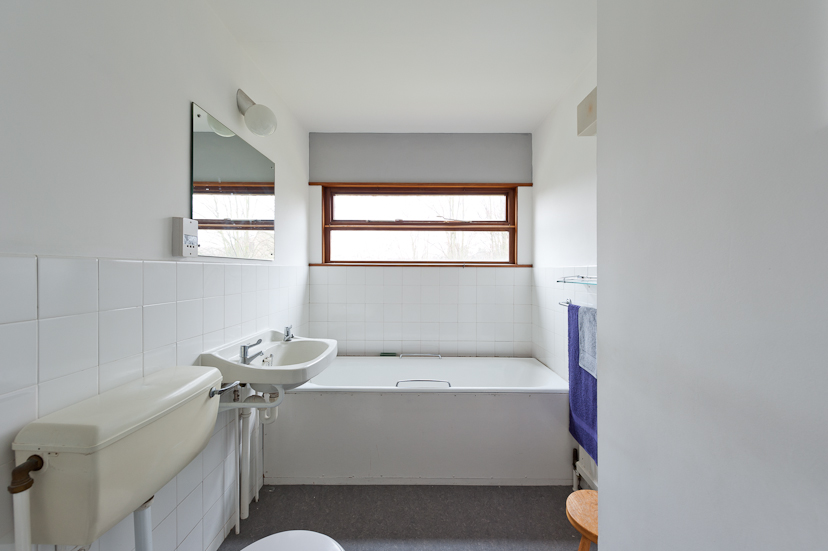
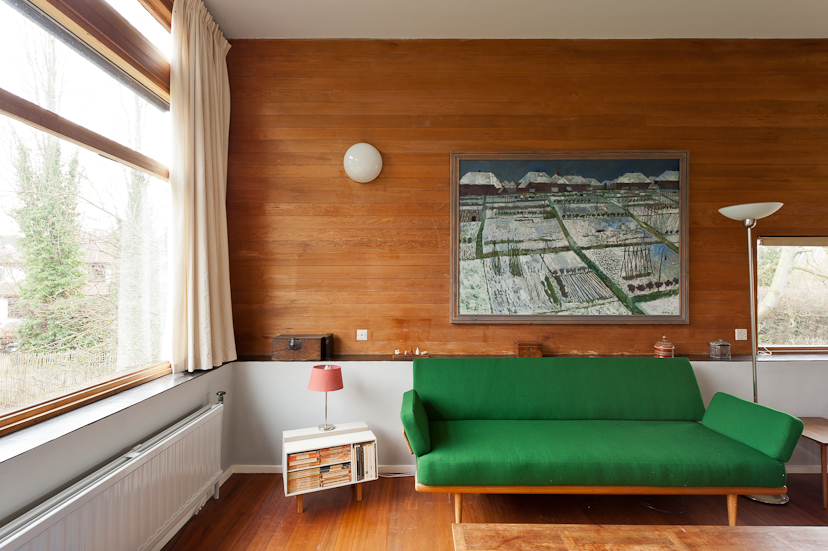
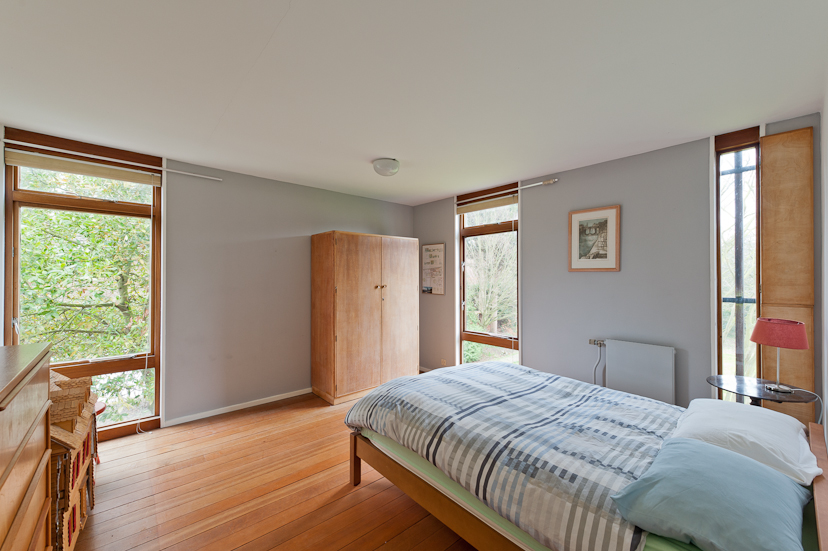
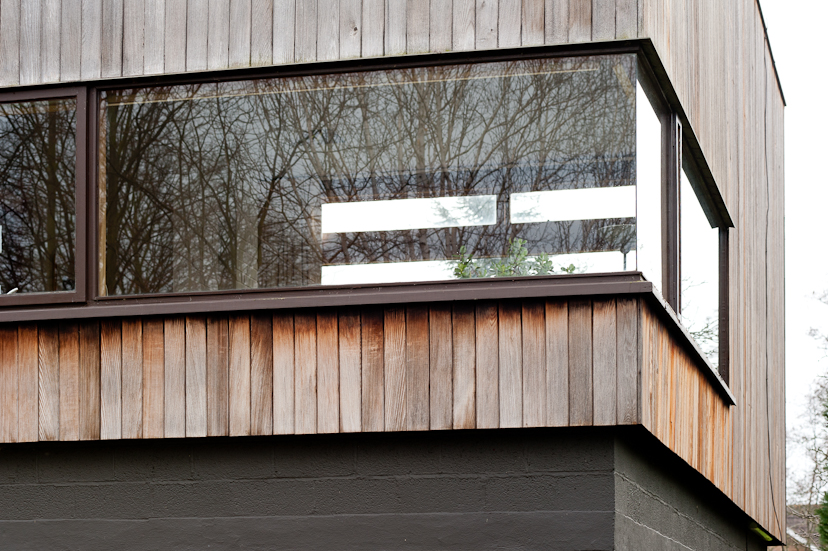
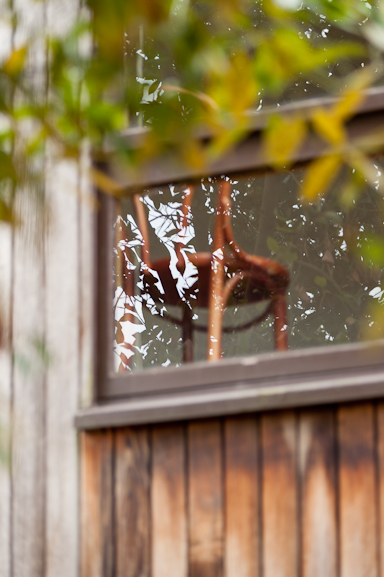
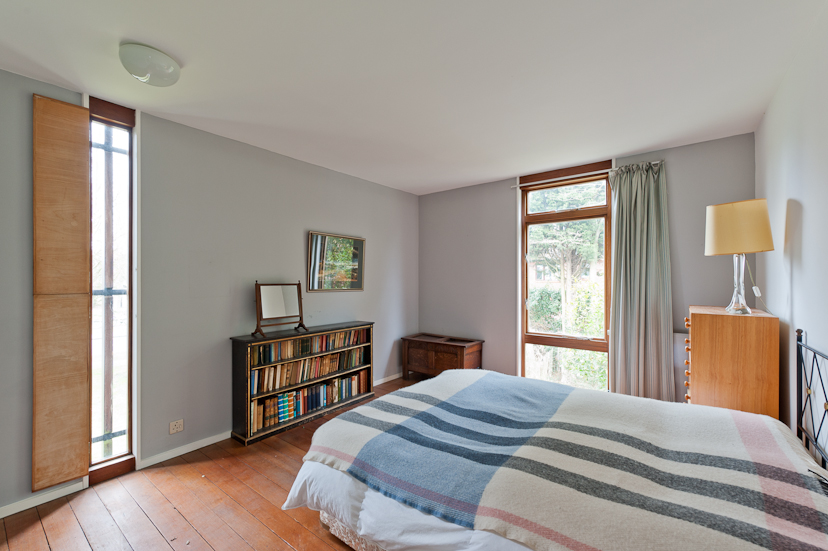
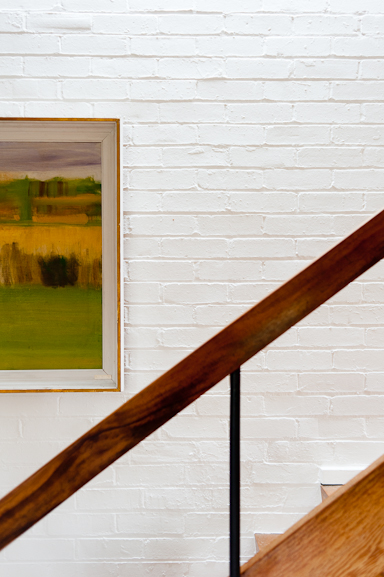
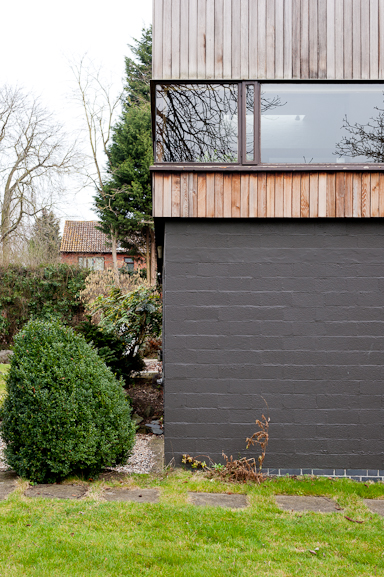
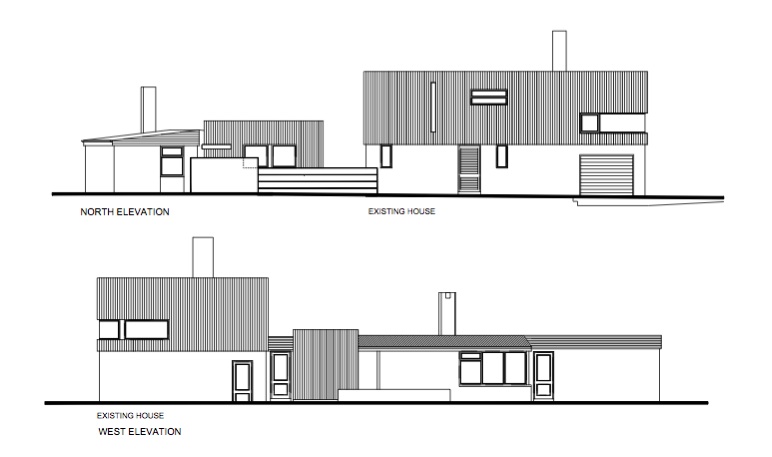
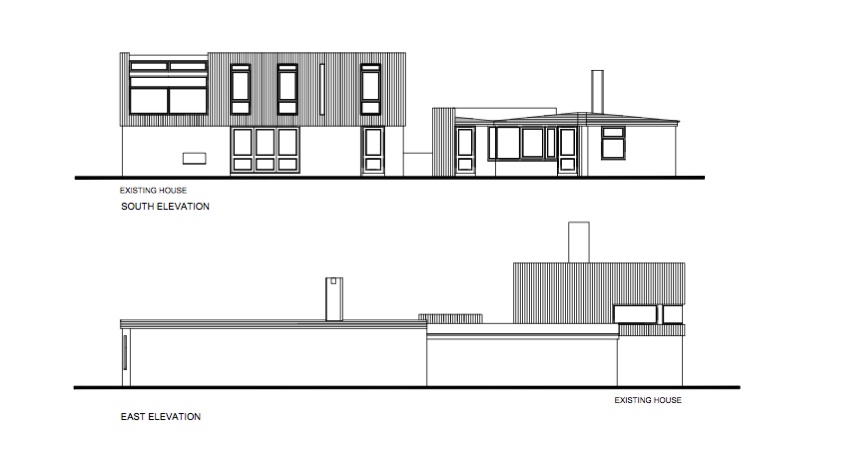
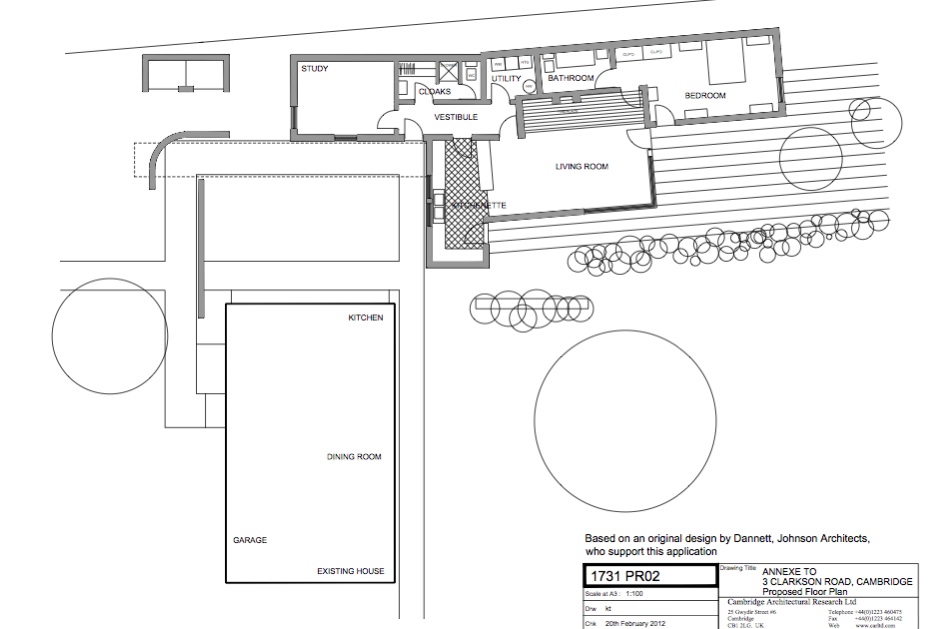
Laslett House, Clarkson Road
Cambridge
Architect: Trevor Dannatt
Register for similar homesThis five-bedroom house, set on a 2/3 acre plot (approx) on a favoured road in Cambridge, is widely considered to be one Britain’s finest post-war private houses. Designed by the architect Trevor Dannatt for the Cambridge professor Peter Laslett in 1958, it was listed by English Heritage in 2004. This is the first time that the house has ever been on the market and is being offered with plans for an annexe also designed by Dannatt that is sympathetic to the original building (updating of original approval pending). The original features and design have remained largely intact, and although some updating may be desired by a new owner, Dannatt recently wrote in relation to the house that “rarely has an architect had a building so well looked after”.
Accommodation includes a wonderful first-floor living room with large picture windows that overlook the gardens and an open fireplace designed by Dannatt. Four bedrooms and a bathroom make up the rest of the first floor. The ground floor includes a fifth bedroom / second reception room, a WC, kitchen and dining room. There is also a garage on the ground floor that could potentially be converted into further accommodation. The gardens are mainly laid to lawn and offer a great deal of privacy. A short driveway at the front of the house provides off-street parking.
Trevor Dannatt is one of the most important figures in British Modernism. His early career included work on the Royal Festival Hall, London before he went on to form his own practice, firstly on his own and later as Dannatt, Johnson Architects. Dannatt’s influence has not only been felt through his celebrated buildings but also his extensive writing, editing of journals and even curating such formative exhibitions such as ’20th Century Form’ at the Whitechapel Gallery (1953).
The house can be found on Clarkson Road, west Cambridge, a popular, predominantly residential area within easy reach of the city centre. It is also conveniently located for many University buildings (it is in the heart of the science and maths area – the maths faculty and Newton Institute and very close by and the Bill Gates Building is approximately 1/2 a mile away). Other features in the local area include the Adams Road Bird Sanctuary, the Cambridge Lawn Tennis Club and numerous good schools including St John’s College School.
The city centre is 0.75 miles away, the main train station is 2 miles away and the M11 is 1.5 miles away (distances are approximate). Trains run from Cambridge to London Kings Cross in approximately 50 minutes. Although a city that is relatively intimate in scale, Cambridge’s international reputation as a historic city ensures that is offers a superb selection of shops, dining opportunities and cultural events.
Please note that all areas, measurements and distances given in these particulars are approximate and rounded. The text, photographs and floor plans are for general guidance only. The Modern House has not tested any services, appliances or specific fittings — prospective purchasers are advised to inspect the property themselves. All fixtures, fittings and furniture not specifically itemised within these particulars are deemed removable by the vendor.




History
Trevor Dannatt was born in London in 1920 and studied architecture at the Regent Street Polytechnic where he studied, most significantly, under Peter Moro. Moro was an enthusiast for the new ideas emerging from Europe, most notably the writings of Le Corbusier. Young architects in Britain were beginning to shift their views towards Modernism during this period of the late ’30s and early ’40s and Dannatt was at the forefront of these changes. He worked not only with Moro after studying but also with two other key figures in British Modernism – Maxwell Fry and Jane Drew.
Dannatt’s editing of The Architect’s Year Book (1948-62) and his input into the 20th Century Form exhibition revealed his interests and influences as an architect as he displayed affinity not only with the works of Le Corbusier, Mies van der Rohe and Frank Lloyd Wright (as might be expected) but also a particular passion for Scandinavian architecture. Alvar Aalton, Gunnar Asplund and Finn Juhl were all firm favourites as was the great Italian engineer Pier Luigi Nervi. Dannatt was also instrumental in the production of exhibitions of artworks by Modern artists such as Victor Pasmore and Eduardo Paolozzi (both of whom he was good friends with) and, in 1953, an early exhibition of the work of Jackson Pollock. Dannatt’s cultural interests not only lay in Modernism however – indeed he recently cited Westminster Cathedral and Christ Church, Spitalfields as well as Le Corbusier’s Villa Savoye among his favourite buildings.
Dannatt’s career has been long-lasting and illustrious – indeed as recently as last year, he oversaw the design of a large house in Hampshire – but it is perhaps the house at Clarkson Road for which he is best known.
HOUSE AT CLARKSON ROAD
Not only is the house at Clarkson Road perhaps most Dannatt’s celebrated design (it’s image forms the cover of a recent monograph entitled ‘Trevor Dannatt: Works and Words’) but it is one that Dannatt himself is perhaps most attached to.
The house was commissioned by the celebrated historian Peter Laslett, who lived in the house until his death in 2001. It is still owned by the Laslett family today. Dannatt and Laslett remained good friends throughout the latter’s life and Dannatt recently wrote that “rarely has an architect had a building so well looked after and such a happy relationship with clients who turned into friends”.
Dannatt also wrote that it was Laslett’s intention, in the mid 1950s, for the house to “make a statement of the ‘modern’ in the then stuffy architectural climate of Cambridge”.
The renowned journalist and television presenter, Sir John Tusa, also remarked on the innovative nature of the house in his foreword to the book ‘Trevor Dannatt: Works and Words’:
“… the hope that this yearning for the new in buildings might become reality came to us through Trevor Dannatt… When [Peter and Janet Laslett] invited us for Sunday lunch in their new house, the whole occasion was an eye-opener. It could not have been – and continues to be – more different from those roads of Cambridge Dons’ houses, redbrick, bay windowed, gravelled drives… Here was a house… certainly not flashy but proud and distinctive.
When Anne [my wife] and I went inside we both now the future we instinctively want was possible. Here it was, and here was someone living in it… The house seemed revolutionary but it also felt deeply right. This was how the world could be, should be. The experience never left us; it represented an ideal of design and behaviour.
Trevor Dannatt’s classical, harmonious, balanced modernism seems as attractive today as it did then. It is.. humane and at home with the places where his buildings sit and with the people who use them. These are enduring qualities.”
Today the house stands almost as it did in the 1950s. The lower part of the house is constructed of Holco blockwork and painted a very dark green. The dominant slightly overhanging upper part is constructed of timber faced with Western Red Cedar boarding which has been allowed to weather. The timber windows are of sapele, stained and varnished.

























